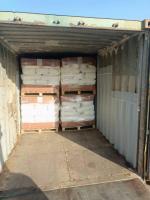Home > Product Center > Flocculant
Our Products


Flocculant
Chinaflocs flocculant powders include cationic flocculant(polyacrylamide,PAM),anionic flocculant(polyacrylamide,PAM)and nonionic polyacrylamide(polyacrylamide,PAM),used for water treatment;oilfield,mineral processing ,papermaking and other application areas.

Products Show
CORE SHELL™ 71305 is a cationic polyacrylamide-based flocculant emulsion manufactured by Nalco (Ecolab). It belongs to the advanced CORE SHELL™ polymer family,
The CORE SHELL™ series of polymers developed by Nalco (now part of Ecolab) represents a class of advanced flocculants engineered with a unique core–shell architecture.
Cationic flocculants are highly charged water-soluble polymers used primarily to neutralize and agglomerate suspended solids in water and wastewater streams.
Cationic flocculants such as FO4190 and FO4290 are advanced water-soluble polymers designed primarily for solid–liquid separation processes.
Cationic flocculants like Zetag 8165 play a critical role in solid-liquid separation processes across various industries. Zetag 8165 is a high-performance cationic polyacrylamide-based flocculan
Poly(hydroxamic acid)-based flocculants are specialized anionic polymers used extensively in solid-liquid separation processes due to their high selectivity and complexation ability with metal ions
For treating dairy factory wastewater, the best-suited cationic flocculants are typically cationic polyacrylamides (CPAM) with low to medium cationic charge and medium to high molecular weight.
Anionic polyacrylamide (APAM) is a high molecular weight, water-soluble synthetic polymer characterized by its anionic (negatively charged) functional groups, such as carboxylate groups.
magnafloc 333 is kind of nonionic flocculant with higher molecualr weight ,mainly used for kinds of mineral processing.











